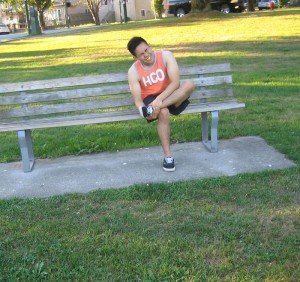Plantar fasciitis involves pain in the base of the heel and considered as one of the most common orthopedic problems. The plantar fascia is the thin ligament that connects the heel to the front of the foot. It is responsible for supporting the arch in the foot as well as helping with walking.
Due to the wear and tear placed on the plantar fascia on a daily basis, plantar fasciitis is one of the common orthopedic problems faced by many individuals. The ligaments function as shock absorbers as well as supporting the arch of the foot. In case excessive pressure is placed on the feet, it can tear or damage these ligaments. As a result, the plantar fascia is swollen leading to stiffness and heel pain.
Causes of plantar fasciitis
Individuals who are obese or overweight are at higher risk for developing the condition. This is due to the increased pressure on the ligaments, especially if there is sudden weight gain. Pregnant women often experience plantar fasciitis particularly during the late phase.
For athletes engaged in long distance running, they are also prone to plantar fascia problems. Jobs that require standing for long hours can put individuals at risk for the condition. Those between the ages of 40 and 70 who are active are at high risk for developing the condition and more common among women.
Symptoms of plantar fasciitis

The major symptom of the condition is pain and stiffness at the base of the heel. This steadily develops over time and typically affects one foot but can affect both. In most cases, the pain is described as dull while others it is sharp or a burning sensation that extends outward from the heel.
The pain becomes worse in the morning during your first steps out of the bed or if you have been sitting or lying down for a long period. It is also difficult to climb stairs due to the stiffness of the heel.
After extended activity, the pain can intensify due to the increased swelling. Take note that pain is not typically felt during activity, but right after stopping the activity.
Treatment for plantar fasciitis
The important aspect of treatment for this condition is to minimize the inflammation, but it does not deal with the underlying damage to the ligament.
For first aid treatment at home, you have to instruct the individual to stop using the affected feet and apply ice for 15-20 minutes 3-4 times a day to minimize the swelling. You can also try to reduce or change your exercise routine. Arch supports placed in the shoes as well as performing stretching exercise can also help relieve pain. Non-steroidal anti-inflammatory drugs such as naproxen or ibuprofen can be given to reduce the inflammation of the ligament.
If home treatments and medications could not ease the pain, a corticosteroid injection can be given directly into the damaged part of the ligament.
Night splints can help stretch the calf and the arch of the feet. These splints hold the foot in a flexed position and lengthen the plantar fascia and the Achilles tendon overnight.
